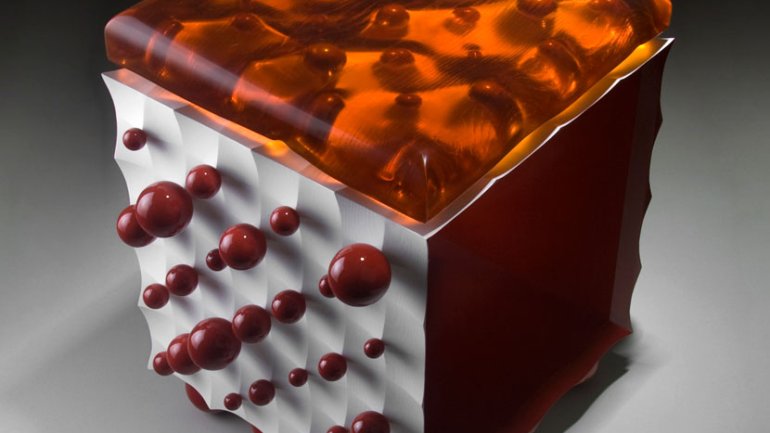Five Questions American Craft Week Edition with Bart Niswonger
Our American Craft Week interview series comes to a close with Bart Niswonger, a studio furniture maker based in Worthington, Massachusetts. His work upends the notion of what furniture should be and how it should look, but remains true to functional demands of furniture for use.
What do you make?
I make furniture. I make furniture because it is complicated - joining wood together but allowing it to move over time, each piece is a puzzle to build; because it is visual - it might be beautiful or fascinating, but it has an aesthetic and a presence in a room; because it is functional - it is important to me that people use the objects I make; and finally because it is tangible - I can have a conversation with anyone about the work I make because we can both see it and touch it and use it.
What does craft mean to you?
I suppose I most often use craft to refer to how well someone makes something. For example, the kitchen cabinets in our house were built by hand, but not well - the level of craft is quite low. It is important to me that my level of craft is as high as I can make it. But an object has to include more than just the making - the design is crucial, and if you are doing it professionally, the marketing is also important - how are you going to sell this one so you can make the next one? So the successful craftsperson must be able to bring all three components together - ability to make, ability to design and ability to sell.
How did you first become engaged with craft?
My father was trained as a print maker and taught printmaking and drawing until a couple years ago. I often helped him in the wood shop - I feel like I have always built objects of one kind or another. He gave me a great foundation in design, particularly graphic design. Most of my formal education is in computer science, and looking back it was the craft aspect of computer science that interested me - writing software that would allow computers to work together in complicated ways, i.e. making complex (intellectual) objects. While intellectually beautiful (at times) it was not tangible - and it was this that finally drove me to make furniture.
If you could master a new craft, what would it be?
My first response is metal working - I want to learn to weld. But then I remember these hair-on hides we have and think, oh I want to learn to sew leather and do upholstery. But both of those are just elements of furniture making. Three years ago my wife and I bought and took over her family's farm. I have been learning the 'crafts' of grass management, cattle raising, soil nutrient management and hay making. It has been intense, and might explain why I still have not learned to weld. But on the other hand, we are harvesting lumber off our own land, and the hair-on hides are from our own cows who we made sure had the best life they could. I suppose if I got just one wish it would be to learn how to manage my time more efficiently so I could do/learn/master all the things I want to do.
What craft events, organizations, or galleries in your region are you excited to share?
The Society of Arts and Crafts in Boston is a great craft organization, and their show CRAFTBOSTON is a great craft show. Gallery NAGA, also in Boston, does a fantastic job (and has for a long time) of showing wonderful furniture as well as paintings. Nationally, The Furniture Society has been an important resource for me - it is a strong community of furniture makers and appreciators. Their conferences always re-energize me.
American Craft Week takes place October 5-14, 2012. Read more American Craft Week interviews. Five Questions is a brief Q&A about books and craft, with people who love and use the American Craft Council Library

